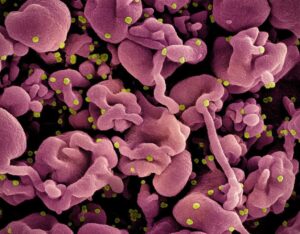Women who experience moderate to severe hot flashes may be more likely to develop metabolic dysfunction–associated steatotic liver disease (MASLD), a small study suggests.
For the study, researchers examined data on 106 women split into two groups: those who were going through perimenopause, a time leading up to menopause that’s often marked by irregular periods and menopause symptoms like hot flashes; and those who were postmenopausal, meaning they had not menstruated at all for a year or more.
Many of the participants experienced only mild hot flashes or none at all, but 42 of them reported moderate to severe hot flashes.
Scientists used two methods to determine whether participants had MASLD (formerly called nonalcoholic fatty liver disease): The first, a tool to predict participants’ fat accumulation in the liver, and second, by calculating each person’s number of MASLD risk factors, such as obesity, excess fat around the midsection, elevated blood pressure, high blood sugar, or elevated cholesterol.
“Hot flashes and night sweats can signal an increased risk for heart and metabolic issues,” said the lead study author, Eleni Armeni, MD, PhD, a researcher in obstetrics and gynecology at Kapodistrian University of Athens, in a statement.
Some Risk Factors Weren’t Taken Into Consideration
Women go through menopause when they stop menstruating, usually in their forties or fifties. Reduced production of the hormones estrogen and progesterone in the years leading up to menopause and afterward can lead to a wide range of symptoms, including mood swings, joint pain, vaginal dryness, insomnia, memory problems, and hot flashes and night sweats, also known as vasomotor symptoms of menopause.
MASLD is caused by an accumulation of fat in the liver that typically occurs when people are overweight or have obesity. It develops when fat builds up in the liver, causing inflammation and tissue damage that can lead to fibrosis, or scarring. As fibrosis progresses, people may develop severe disease and require a liver transplant.
The new study did account for several factors that can influence the risk of menopause symptoms and liver disease, including physical activity levels and drinking habits. But the study didn’t account for whether participants were overweight or obese, a factor that can impact both the severity of hot flashes and the development of MASLD.
In addition, the study didn’t look at several other risk factors for severe vasomotor symptoms, such as depression, anxiety, stress, being lower class, and being less educated, says Robert Eckel, MD, a professor emeritus of medicine at the University of Colorado Anschutz Medical Campus who wasn’t involved in the new study.
Estrogen Levels During Menopause
The study did look at whether women took hormone replacement therapy (HRT) for menopause symptoms, which might be associated with lower levels of fat storage in the liver, Dr. Eckel notes.
“Estrogen may reduce risk for MASLD, but this has not been extensively studied in humans, nor by route of estrogen administration, i.e., oral vs. dermal vs. vaginal,” Eckel says.
The study was also too small to draw broad conclusions about the connection between hot flashes and MASLD. It also wasn’t designed to prove whether or how specific menopause symptoms might directly cause liver disease, or vice versa.
“It could be that there is something about women who have MASLD that might make them feel their hot flashes more,” says Mark DeBoer, MD, an endocrinologist at the University of Virginia School of Medicine in Charlottesville who wasn’t involved in the new study.
A stronger connection between vasomotor symptoms, MASLD, and cardiovascular disease is also possible, Dr. DeBoer says.
“Menopause causes a drop in estrogen that leads to both hot flashes and increases in cardiovascular risk — so those with hot flashes are more likely to be farther along in menopause and to have had time to have worsened cardiovascular disease risk factors,” DeBoer says.
“If women with hot flashes are more likely to have MASLD, as their data suggest, then it could be high yield to look for cardiovascular disease risk among those with MASLD,” DeBoer says. “Still, in that age range we should be concerned about increasing cardiovascular disease risk in all women, and may want to screen everyone.”













Post Comment